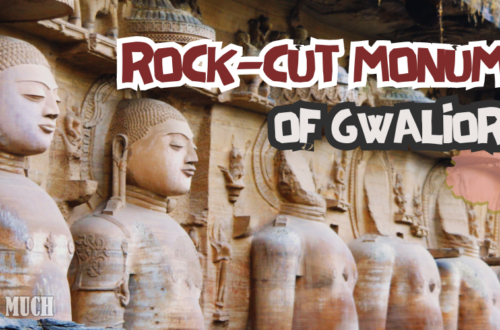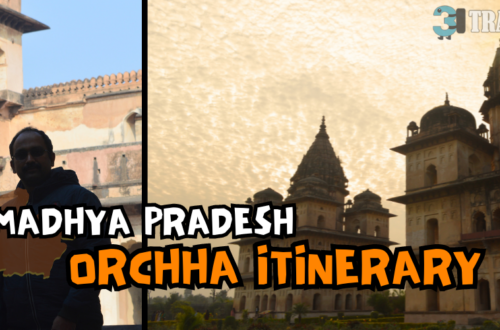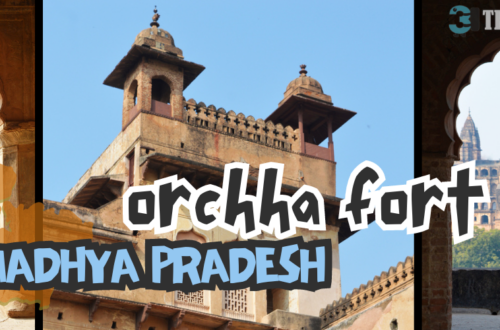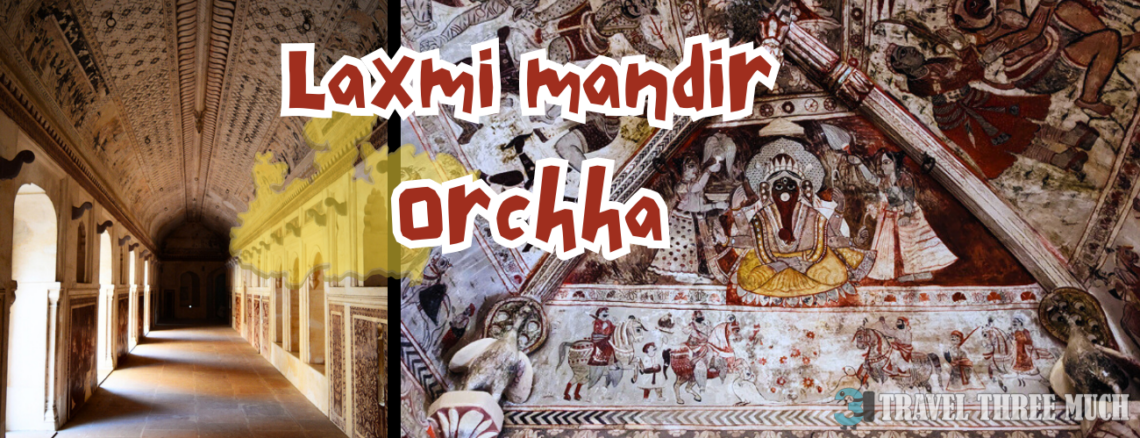
Laxmi Mandir, Orchha
The Hidden Town of Orchha
Orchha means ‘hidden’. This town in India’s Madhya Pradesh on the banks of the Betwa River was the stronghold of the Bundela Rajputs. True to its name, Orchha conceals many treasures of Indian history, art, and architecture. One such unique and breathtaking gem is the Laxmi Mandir, a temple dedicated to the Hindu goddess of wealth – Laxmi.
The Origins of Laxmi Mandir
Raja Bir Singh Deo, a Bundela chieftain built this temple in 1622 CE. The site of the temple is on a hill, near the Orchha palace-fort complex. The vantage point from the temple offers an expansive view of the palace fort of Orchha. The crenellations atop the temple were to be used as gun ports, according to historians. Therefore, the temple may have served as a defensive arrangement to ward off and get early information about the invaders of the Orchha fort.
You might also like: 2 Day Orchha itinerary
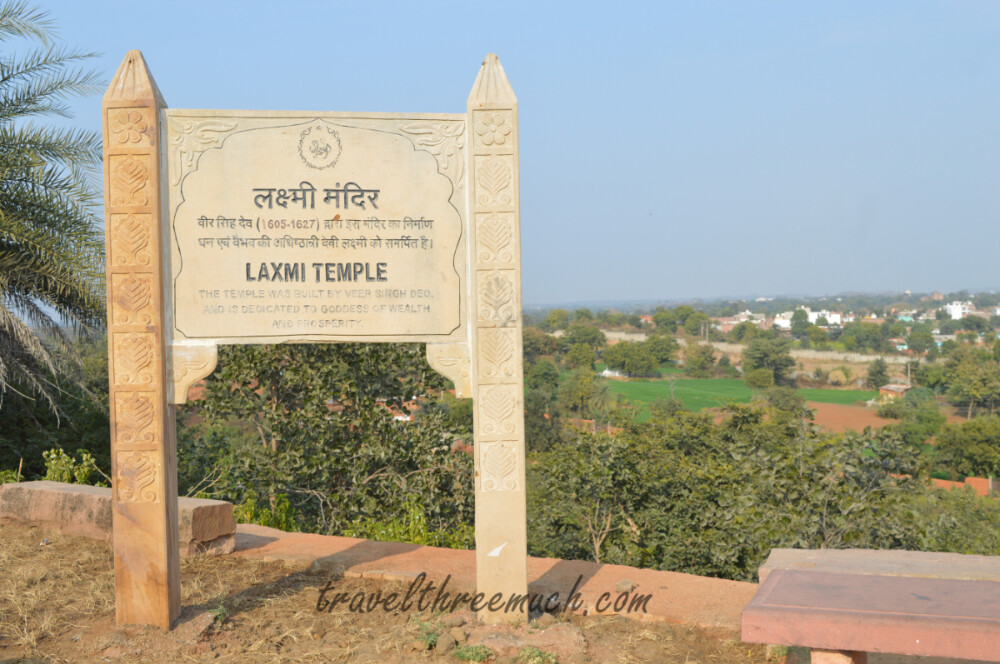
Our Visit to Laxmi Mandir
We took a tuk-tuk from the town and agreed with the driver on the return fare. We got his phone number with the agreement that we’d give him a call once we’re finished exploring the temple and he can take us back to the town. He dropped us off at the foot of the hill on which the temple sat. A short trek later, we were at the entrance on the eastern corner of the diamond-shaped temple. Each corner of the robust temple wall had a chhatri-like structure supported by fluted pillar-like structures. A domed octagonal shikhara towered over the sanctuary, with its spire piercing the bright afternoon sky. A guard checked our tickets and ushered us in.

 Plan your trip
Plan your trip
- Construction date: Completed in 1622 CE; Rebuilt in 1793 CE.
- Timings: 9:00 AM to 5:00 PM, open all days
- Entry fee: No separate entry fee required (use Orchha Fort entry ticket)
- Getting there:
- Walk from Orchha Fort (about 1 km)/Tuk-tuk/Cab from town
- If you’re taking a tuk-tuk or cab and would prefer to return via the same mode, it’d be better to make arrangements with your driver to ferry you to your next destination.
- Note:
- Orchha Fort and Jahangir Mahal entry ticket covers this temple visit as well. So retain your tickets!
- Don’t miss the frescoes on the ceiling and the surrounding walls.
Bonus tip – The paintings are very inviting to photograph. So ensure enough storage space in your camera/mobile.
The structure
Unique Architectural Features
Usually, temples will have their entrance either parallel or perpendicular to the cardinal directions. At the ground level, the temple’s layout seems triangular. However, a strange feature of this temple is its diamond layout with the corners aligned to the cardinal directions.
Orchha accumulated immense wealth thanks to brisk trade with the Mughals. The original deity in the sanctum was made from solid gold. The deity was lost in the wars with the Marathas and was replaced with a statue of Radha-Krishna between 1752 and 1765 CE. Raja Prithvi Singh undertook the reconstruction and expansion of the temple in 1793 CE. However, the Radha-Krishna image was lost in 1986 CE to thieves. The monument is a unique blend of temple and military architecture.
Art and Frescoes
The passage immediately after the entrance had artworks of a pair of wrestlers, a tiger hunt, a mendicant, a king in his durbar, Siva and Parvati with their respective steeds and a couple of Englishmen heads suspended in midair. All these artworks were in the Bundelkhand school of art style. They were made by scratching out a red outer layer, exposing the plaster of the wall, and is termed as ‘sgraffito’ method.
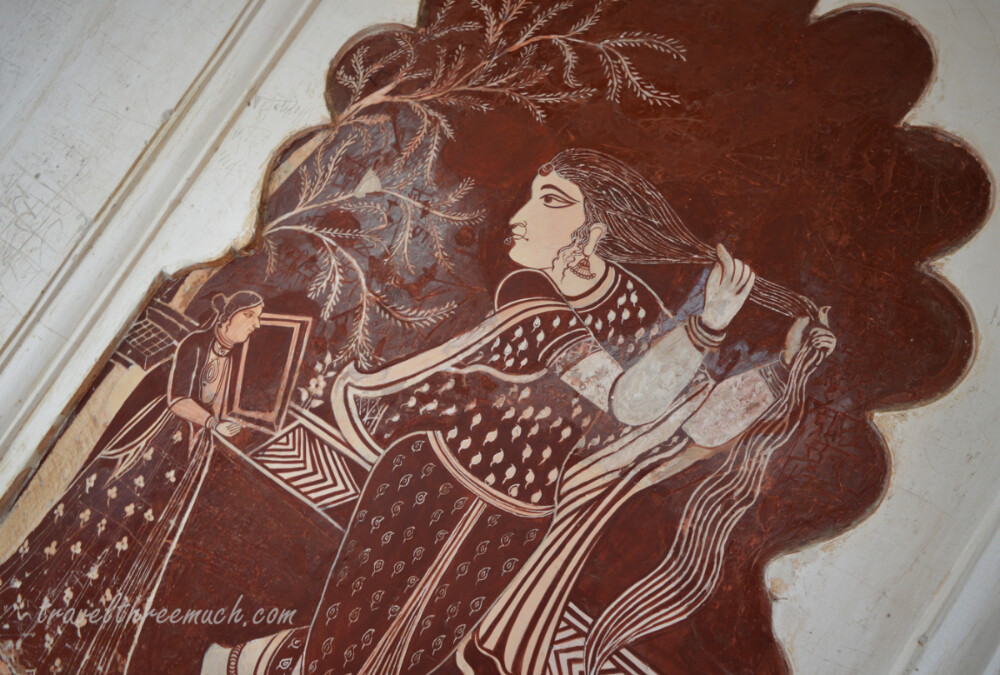

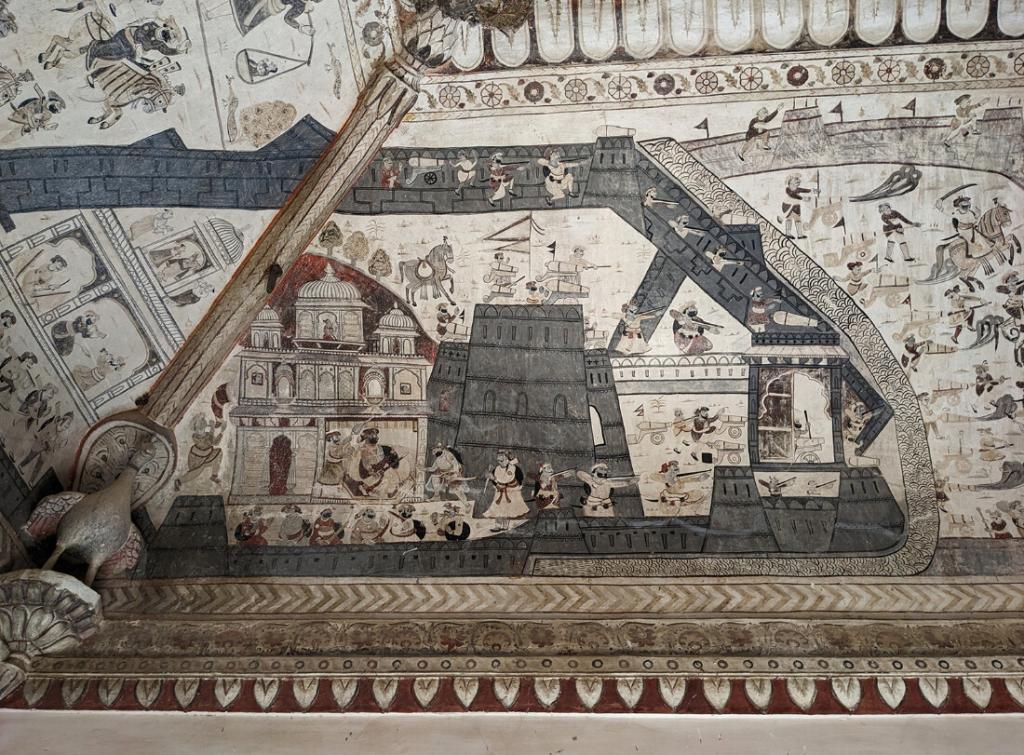
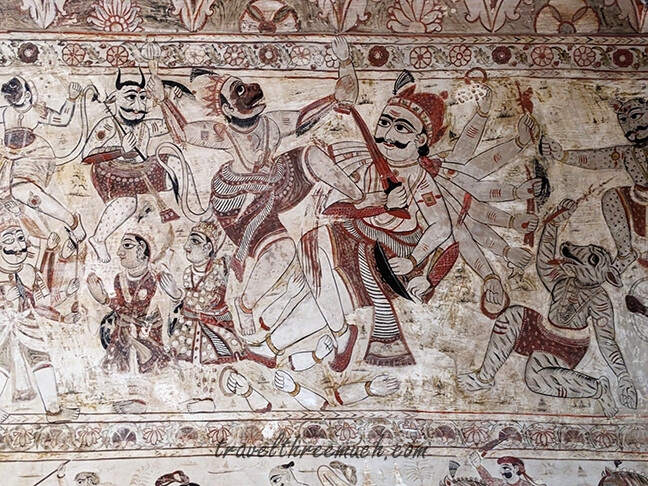
Exploring the Passageways – The Hidden Gems
As we explored the passageways, the massive frescoes that adorned the ceilings and walls left us in shock and awe. These paintings, dating from the 17th century CE to the 19th century CE were exquisitely detailed and dealt with myriad themes. Some panels had scenes from the Ramayana, India’s first war of independence in 1857 CE with the British and Mughals with the Battle of Jhansi, Bundela court scenes, the mythical Vyali beast or Shungi bird that could fly away with 7 elephants while attacked by a bird, mythological scenes of Lakshmi with her attendant elephants, Vishnu, Ganesha, etc. all in relatively better conditions than the paintings in the Orchha fort’s Raja Mahal.
We went up a staircase to the upper level of the temple. We saw scenic views of Orchha town with the skyline dominated by the spires of Chaturbhuj temple and the Royal Chhatris.

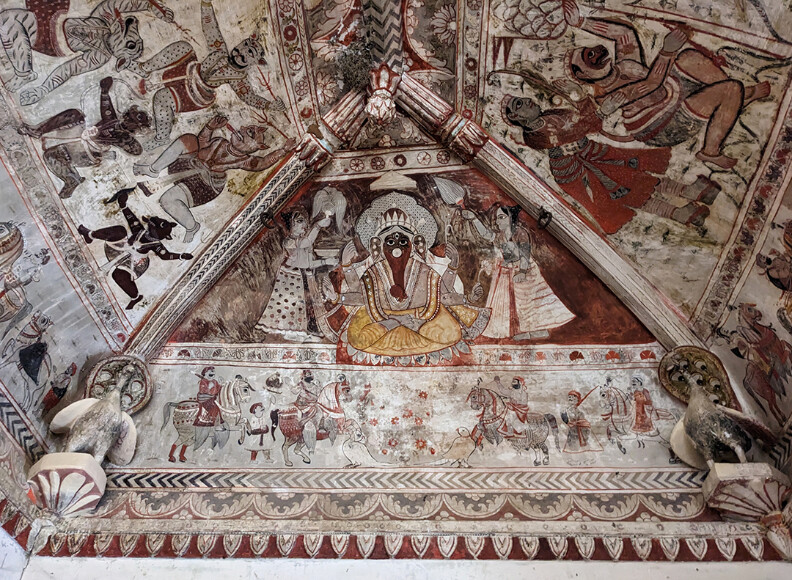
A Fond Farewell
We were in the temple for much longer than we had planned, and we still couldn’t capture the beauty and details of the paintings that had us in their thrall. This hidden gem has so much to offer in art, architecture, and history that it deserves to be on every Orchha itinerary!




